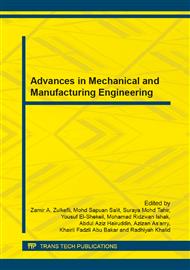p.216
p.222
p.228
p.234
p.240
p.245
p.250
p.256
p.263
Flame Temperature Distribution from ISO2685 Standard Propane-Air Burner Using CFD
Abstract:
This analysis considers the computational simulations of the temperature distribution of a propane-air customary flame combusted from an aeronautical fire-certification set according to the ISO2685standard. The numerical codes have been executed in Computational Fluid Dyanmics using the k-ω SST turbulence model coupled with eddy-dissipation. The resultshowsthat the maximum predicted temperature using the standard flame settings exceeds the required temperature for evaluation of a fire-resistive material. The mole fractions of the by-products, carbon dioxide and water have also been predicted.
Info:
Periodical:
Pages:
240-244
Citation:
Online since:
June 2014
Keywords:
Price:
Сopyright:
© 2014 Trans Tech Publications Ltd. All Rights Reserved
Share:
Citation:


